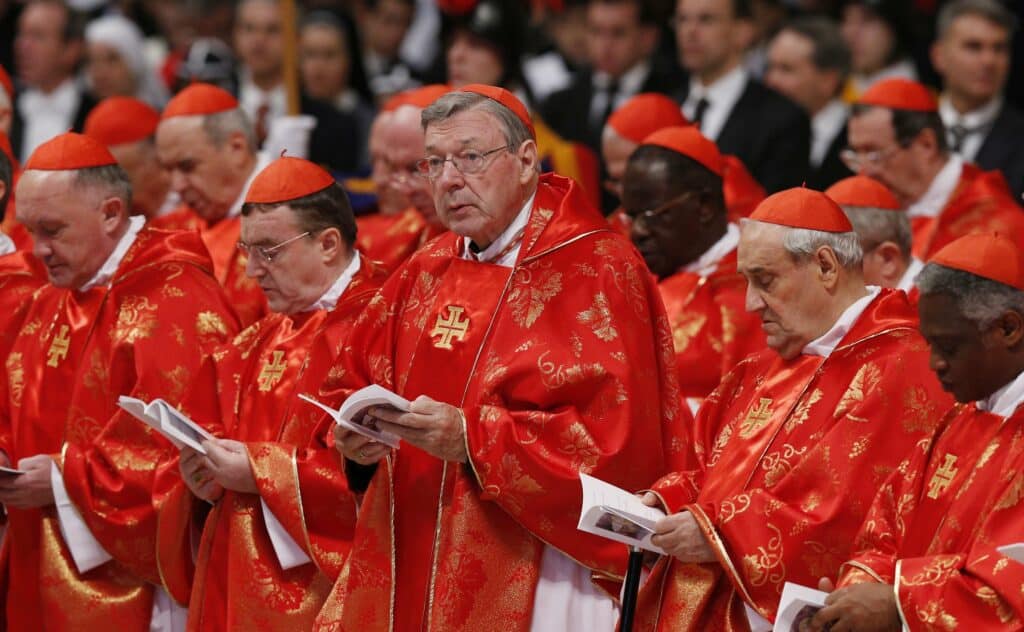
While bishops are mourned mostly by their communities, such was the stature of Cardinal George Pell that the news of his death in Rome on 11 January at the age of 81 was received by Australian Catholics everywhere as a blow and instantly reported around the world.
The effect was magnified by his forceful influence in Church and politics over decades, his rise in Church affairs and his attempted legal assassination by public hysteria in possibly the most shameful legal event in the nation’s history.
By the time of his death, he had risen to be the third most important figure in the Vatican, serving as the first Prefect of the Secretariat for the Economy after being appointed by Pope Francis to lead the efforts to clean up the bizarre mess of Vatican finances.
Both in Australia and internationally, Cardinal Pell was a link between two worlds: a much stronger and more confident Catholic faith of the first half of the 20th Century and the Church’s search for ways to answer the challenges of a modern age which increasingly saw Christianity, and the Catholic Church in particular, as irrelevant to the meaning of human life.
His willingness to enter debate and the public square for Christ, Christianity and the Church won him the admiration of numerous Catholics across the nation. It won him many enemies too. But his Church loved him more than the world hated him.
Once having entered debate he could not usually be categorised as subtle, choosing instead to address subjects directly and, if necessary, bluntly. His willingness to speak clearly and avoid the mild and often-supremely irenic language of his ecclesiastical contemporaries endeared him to Catholics everywhere. They saw him, above all else, as a leader of courage in faith, something they rarely encountered.
They came to refer to him simply as “the Cardinal”. Whenever they used those words, they all knew who they were talking about. Above all, George Pell was a man of courage.
His gigantic stature in the Church in Australia meant that his death this month was received much as the news in 1963 of the entry into eternal life of his predecessor as Archbishop of Melbourne, Daniel Mannix.
Cardinal Pell admired Archbishop Mannix for his robust defence of a Catholic Church that had historically been relegated to second-class status by Australia’s then-WASP ascendancy.
Just as “Danny” Mannix took on Prime Minister Billy Hughes over the issue of conscription during the First World War, and won, “the cardinal” was unafraid of taking on difficult issues or high office in public debate, even if it meant taking unpopular positions.
What mattered to him was the truth, which he never believed was determined by opinion polls or public sentiment, no matter how widespread.
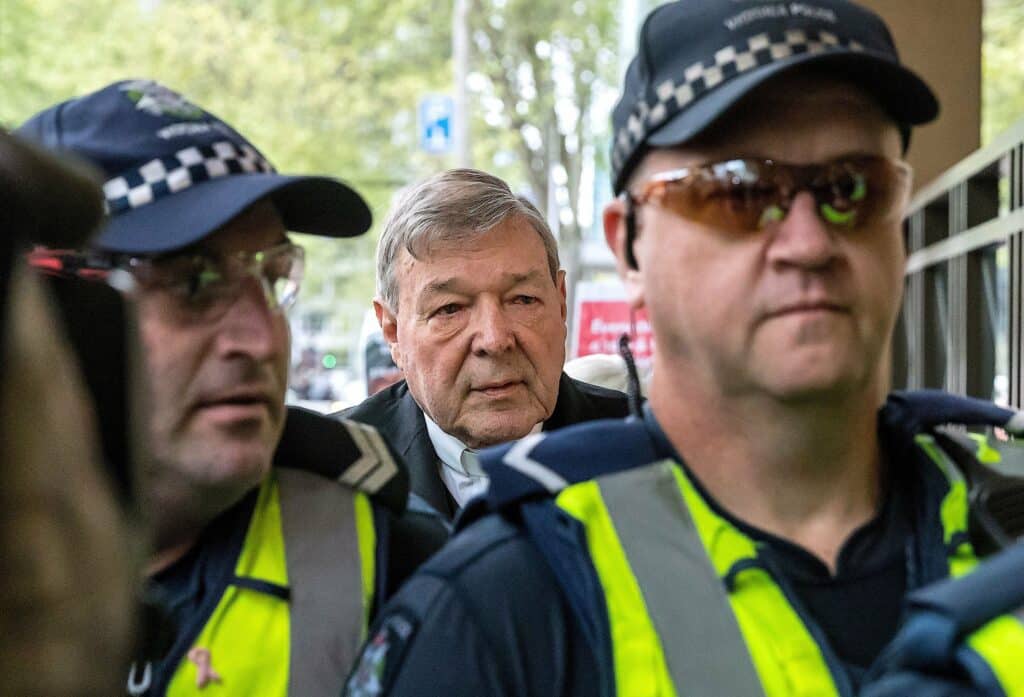
A share in the Cross of Christ
Yet Cardinal Pell undoubtedly received a share in the Cross his Lord seems to reserve for those he loves greatly when he was charged with historical crimes of sexual abuse, convicted in a Victorian court in February 2019 and sentenced to prison.
Australian Catholics were shocked that a hero of their faith and identity had been convicted of the vilest crimes, yet many sensed that the investigation had been essentially cooked up in a shambolic way by those determined to frame him. The results were a legal farce, given that there were no witnesses and no evidence.
This had all occurred against the widespread background of some of the worst journalism in Australian history, including from Australia’s national broadcaster, which saw public opinion across the nation and in his home state poisoned against him over years, making – many legal experts agreed – a fair trial nigh impossible.
Even Catholic opponents and critics of the Cardinal’s theological and political views, such as ACU law professor Frank Brennan SJ, saw the investigation, trial and resultant verdicts as surreal, beyond rational belief and obvious travesties of justice.
Australian Constitutional Law expert Prof Greg Craven, Vice Chancellor of Australian Catholic University, concurred in his reading of the legal shambles and public lynch mob mentality which had been unleashed against the Cardinal.
The supreme irony was that, beginning as Archbishop of Melbourne, the prelate had set out with determination to address on behalf of victims the crimes of abuse, including ways to assist them and provide redress. Meanwhile, his far more cautious Australian episcopal colleagues were still working out how they wanted to go about it and were uncomfortable with his decision.
Cardinal Pell’s eventual vindication and unanimous acquittal by the full bench of the High Court in April 2020 was therefore a public and historic slap in the face to Victorian police, prosecutors, two of the three judges presiding at his appeal and the media who had aided and abetted the whole event. The acquittal made global headlines.
Meanwhile, the Australian controversy served to temporarily obscure Cardinal Pell’s wider historical importance to the Church in Australia and around the world.
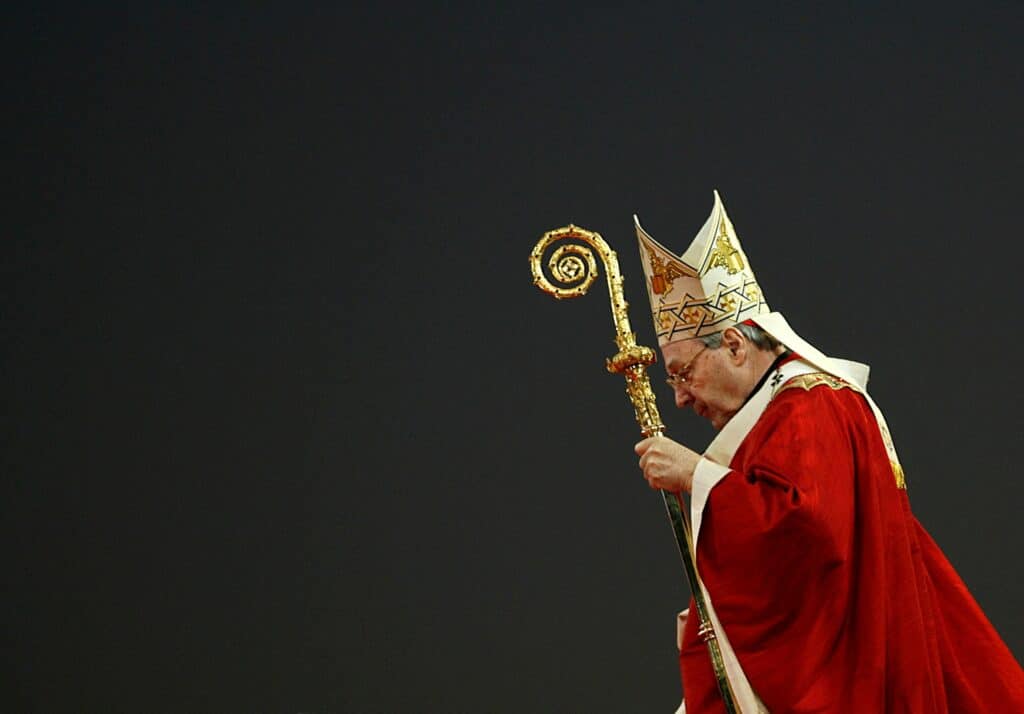
A career at odds with the world
Born on 8 June 1941 as war raged around the world to George and Margaret Pell, the strappingly tall young Australian had signed up with the Richmond Football Club in 1959 and played in the VFL reserves. A career as a star of Australia’s national game, however, was not to be.
The young George Pell instead commenced studies for the priesthood at Corpus Christi College, Werribee in 1960, and also attended Propaganda Fide College in Rome.
The time was historic; George Pell’s studies for priesthood took place during the 1962-1965 Second Vatican Council, the landmark event in the life of the modern Church.
He was ordained for the Diocese of Ballarat in 1966 by Cardinal Grégoire-Pierre Agagianian, while still studying in Rome.
He continued his studies at Oxford University, receiving a PhD in Church History in 1971, a time of study that deeply informed his thinking about a Church rapidly being engulfed by modernity’s radical change in perspective.
As the global Church found itself affected by the debates of the age on everything from contraception to liberation theology it found itself entering its own crisis of identity with each passing year.
Yet while many Catholics sounded alarm bells about a supposed loss of direction on the part of the Church, while the historian George Pell accepted the seriousness of the situation he knew the Church had been through worse on many occasions. He always remained optimistic.
To those warning of a church in danger of being swamped by heterodoxy he would occasionally point out that if one wanted to see a Church in serious trouble, they should look instead at its experience in the 10th Century, where corruption had overtaken large swathes of its existence.
Meanwhile, his long association with figures such as the influential Melbourne-based Catholic intellectual BA Santamaria saw him pigeon-holed as a “conservative” in Church affairs in Australia.
Although they did not agree on everything, Santamaria, once described by Gough Whitlam’s biographer as Australia’s only intellectual of the high European order, was one of George Pell’s major intellectual tributaries.
They shared passions for the Church, football and politics, as well as a deep friendship and respect for each other. It was then-Archbishop Pell who presided over Santamaria’s state funeral in St Patrick’s Cathedral in Melbourne in 1998.
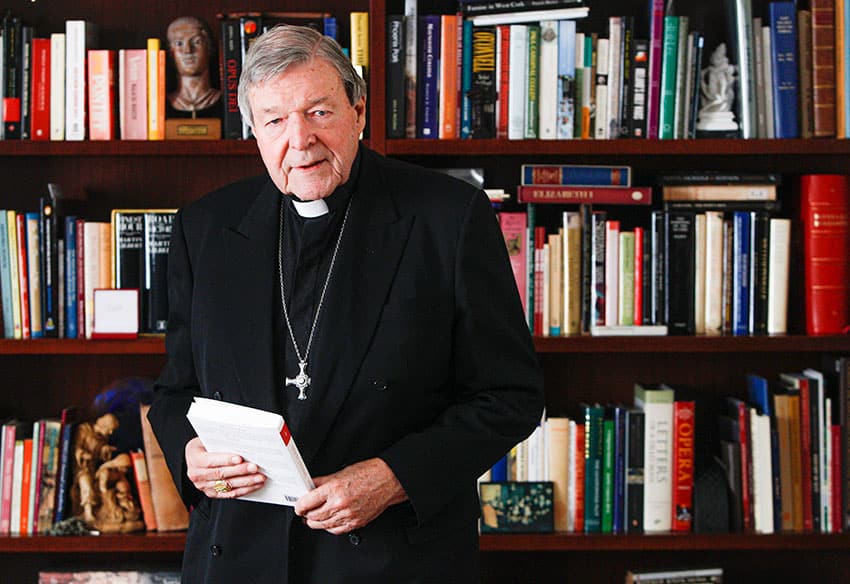
A sign of contradiction
His consecration as Auxiliary Bishop of Melbourne in 1987 was therefore watched with nervousness by Australian Catholics hoping for the liberalisation of Church doctrine, often in issues of marriage, contraception and sexual morality which had so often become the leitmotif of a society still in the process of being deeply changed by the Sexual Revolution of the 1960s.
However his naming by St John Paul II as the seventh Archbishop of Melbourne in 1996 came as a shock to the Church’s bureaucratic and clerical establishments, many of whom had seemingly defaulted to pursuing an ongoing rapprochement of retreat with an increasingly secularised Australia, set against the background of a Catholic community clearly in numerical decline.
George Pell’s decisiveness and leadership did not take long to emerge. He made the reform of the Archdiocesan Seminary a priority, instituting mandatory practices for seminarians such as attendance at daily Mass and praying the Rosary – practices considered normal everywhere else in the Church.
Outraged seminary staff revolted and publicly threatened to resign at the reimposition of what they saw as the Archbishop’s “conservative” agenda.
Characteristically, George Pell seized the opportunity and accepted their resignations. He immediately set about re-appointing staff in whom he had confidence to form priests of the new evangelisation.
Inspired by Bishop William Brennan’s 1992 opening of his own seminary in Wagga Wagga, after his appointment as Archbishop of Sydney in 2001 he revitalised the Good Shepherd Seminary at Homebush.
Following the lead of another close episcopal ally, Archbishop Barry Hickey of Perth, he saw Australia’s second Redemptoris Mater seminary opened at Villawood, operated under the auspices of the Neocatechumenal Way.
His high public profile in debates saw him regarded as a natural leader by many, with then-prime Minister John Howard naming him as a delegate to the Australian Constitutional Convention in 1998.
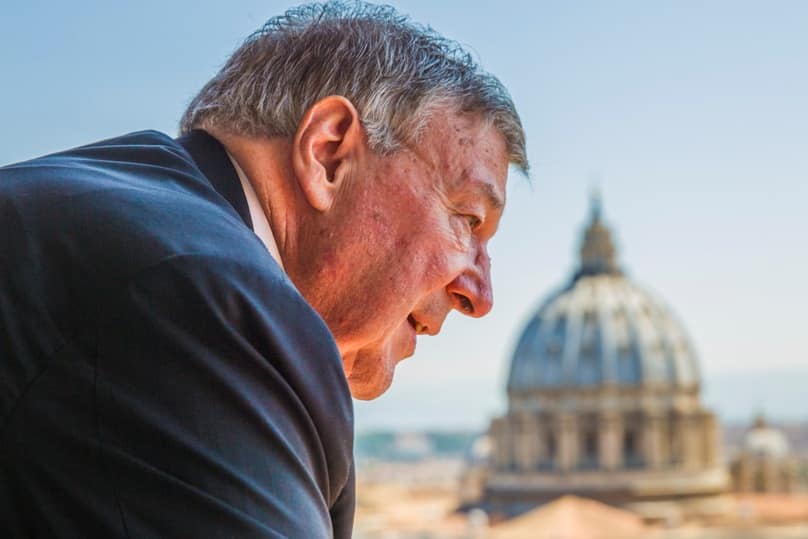
Service to Rome and the Universal Church
However, Archbishop Pell’s profile was being watched further afield. In 1990 Pope John Paul II appointed him a member of the Congregation for the Doctrine of the Faith, for centuries the Church’s key doctrinal safeguarding authority, on which he was to serve until 2000.
The sensitive and key appointment on the part of the future saint-pope reflected the degree of trust and respect for then-Archbishop Pell’s intellectual judgement and understanding of the Church.
In 2002, Pope John Paul II appointed him President of the Vox Clara Commission on English translations of liturgical texts, a key appointment to ensure translations of the Mass in the vernacular were faithful to the Latin texts.
Translation of texts had developed as an issue in the Church over decades following the Second Vatican Council, when Mass began to be celebrated in the vernacular. At the same time, liturgical innovations – some bizarre and certainly never authorised or called for by the council – had multiplied and flourished in many countries.
The translations produced by Vox Clara under George Pell’s chairmanship went on to become the definitive texts of the prayers to be used for the celebration of the Catholic Mass throughout the world.
In 2003 he was named a Cardinal by St John Paul II, making him one of approximately 130 men who would be responsible for electing the 264th successor to St Peter.
Appointment as a cardinal, essentially a member of a pope’s inner cabinet of advisors, is one of the highest marks of trust in an individual’s commitment to Christ and the Church. It also automatically makes those who are made cardinals potential future popes.
In 2005, Cardinal Pell became a member of the conclave which elected Cardinal Joseph Ratzinger, the quiet, scholarly and courteous cleric, as Pope Benedict XVI.
Ratzinger, one of the foremost theologians of the age, had been a peritus at Vatican II. Given the Church’s own ongoing crisis of identity in modernity, Cardinal Pell clearly identified with the orthodoxy of Vatican II and the effort to ensure its teachings spread and were embraced throughout the Church.
Although cardinals are forbidden to reveal any details of a conclave, Cardinal Pell was regarded as highly influential in the conclave’s decision to elect Ratzinger as pope.
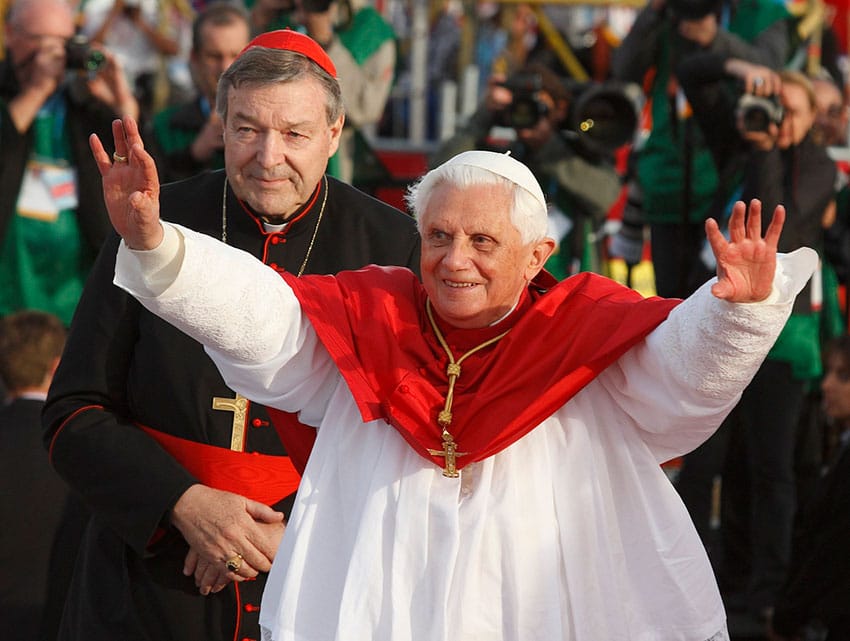
World Youth Day: a triumph
Even though he was increasingly engaged in church affairs at a global level, Cardinal Pell did not neglect his beloved adopted city of Sydney. With characteristic confidence he set about lobbying for World Youth Day to be held in Sydney 2008 in a coordinated and formidably well-organised behind-the-scenes campaign.
He saw the event as a significant moment of encouragement and potential in the life of a Church facing the reality of being situated in one of the most secular societies in the world.
Half a million pilgrims travelled to Sydney in 2008 to gather with the new German pope, Cardinal Pell and bishops from around the world. The day-to-day organisation of the major event was entrusted to then-Sydney Auxiliary Bishop Anthony Fisher OP.
Despite Australia’s remoteness from the rest of the world, the Sydney event came to be regarded as setting a stellar new standard for World Youth Day gatherings and a textbook instance of how to organise it successfully.
Among its fruits were the return of many to the Church and numerous vocations to Christian marriage, religious life and priesthood, together with a wider effect on the Church in Sydney and Australia. Its effects continue to unfold 15 years after the event.
Cardinal Pell also remained strongly committed to education, especially at a time when the Academy in western societies appeared to have voluntarily surrendered to disparate ideologies united chiefly by their rejection of, and hostility to, Christianity.
He played a major role in the upbuilding of Australia’s Catholic tertiary education sector: as foundation Pro-Chancellor of the Australian Catholic University, founder of the Melbourne session of the John Paul II Institute for Marriage the Family, co-founder of the Sydney campuses of the University of Notre Dame Australia, and an influential supporter of Campion College, Australia’s first Liberal Arts college.
He saw these and other initiatives as offering the young a unique education but also contributing to the long-term common good of society.
Throughout his time as Cardinal Archbishop of Sydney he pursued close relationships and alliances with other Christian leaders such as the-then Anglican Archbishop of Sydney Peter Jensen and fostered the numerous new movements in the Church that were one of the few signs of confident growth on the Australian Catholic scene.
In 2012 he was appointed by Pope Benedict XVI as a member of the Congregation for Bishops, a key post advising the Pope on the selection of bishops to lead the Church around the world and therefore determining much of the character of the Church wherever it exists.
Following Pope Benedict’s historic resignation, in 2013 Cardinal Pell found himself in a second conclave, undoubtedly far earlier than he had anticipated given that no pope had retired for more than six centuries.
The resulting election of Pope Francis, the first pope from the southern hemisphere, the first American and the first Argentinian, may have led the Aussie cardinal to think he could finally begin contemplating retirement.
Instead, he was appointed first Prefect of the newly-created Vatican Secretariat for the Economy by Pope Francis in February 2014, charged with the sensitive task of assisting the Pope to reform and address endemic misuse and corruption of Vatican finances which had clearly been underway for decades.
The parlous state of aspects of Vatican financial management were believed to be one of the factors that had led the ageing Pope Benedict XVI to resign the papacy.
Cardinal Pell took up residence fulltime in Rome and began the arduous process of ascertaining what existed financially and what needed to be done.
It rapidly became clear he faced stiff curial opposition, including from senior figures in the Vatican who had not reckoned on having to deal with the detailed scrutiny and forceful personality of the Australian boy from the bush.
His decision to return to Australia to face charges of abuse—although he could have chosen to remain indefinitely in the Vatican—saw him step down from his role. The decision also revealed what might be described as a surprising naivete on the part of the prelate regarding the Australian legal system, given that his desire to return was motivated precisely by his desire for justice and to have his day in court.
It is certain that neither he nor his legal team ever expected the nightmarish and bizarre proceedings that resulted. Subsequent to his vindication by the High Court it transpired that one of those who sought to derail his efforts at financial reform in the Vatican, Cardinal Angelo Becciu—currently on trial in the Vatican over shady financial dealings regarding an investment property in London—had wired several million dollars to Australia at the time of the Cardinal’s legal odyssey.
After his release, Cardinal Pell pointedly and publicly invited Cardinal Becciu to explain on several occasions what the funds had been intended and used for. The details were not forthcoming.
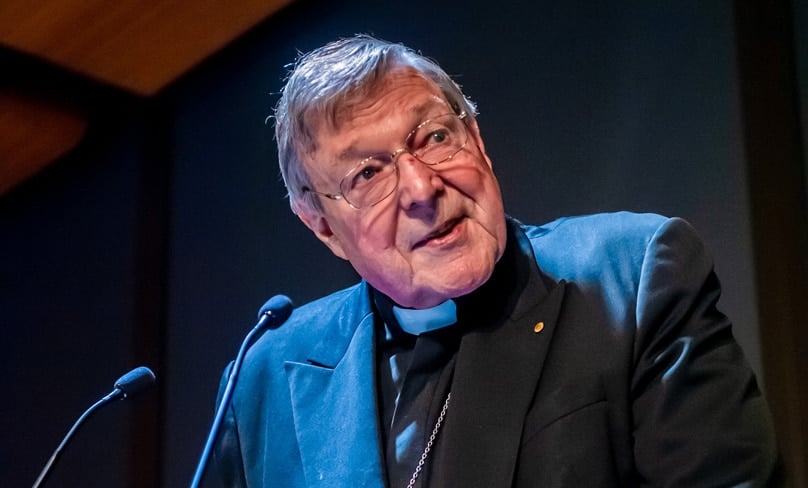
Cardinal Pell’s enduring legacy
Yet out of darkness, good can come. It is entirely possible that long after his passing his greatest enduring legacy will be found in his prison diaries.
These quiet, reflective documents may well become regarded as classics for their spiritual coming to grips with suffering of the worst kind. What shines through in their pages is the faith in his Lord and Saviour that those who knew and worked with him knew underpinned his entire life.
He became a force in the global Church, not only in terms of governance but for his thinking on modern society, the Church and the intersections between the two.
He read prolifically throughout his life, delivering numerous addresses and contributing numerous articles to influential publications focused on history, society, the Church, culture and politics.
A typical example was his hour-long address given in the NSW Parliament at a Dinner for Campion College in August 2022. In standard Cardinal George Pell fashion he weighed into a wide-ranging assessment of the current state of the world, geostrategic issues, the extensive changes in Australian society and culture throughout his lifetime, the challenges facing the Church and the importance of authentic education in a world in which it had become dominated by ideology.
The death of Cardinal Pell leaves a gaping hole in the Church in Australia and further abroad in places such as the US, which he visited often to give talks and addresses and where he was widely admired.
Hated widely in Australia, Catholics everywhere else in the world admired and loved him. Many senior Catholic figures and intellectuals regarded him as papabile, one of those considered capable of being elected pope.
Clearly the most recognisable Australian church leader of any denomination, he was known, revered and hated in equal parts across the nation. Within Australia, for good or ill, he was the voice of the Church, becoming in the process a lightning rod for those who hated it and whose criticisms became irrational and vicious, blaming the man.
It is no exaggeration to say that he was attacked because of his monumental presence and strong positions. By any measure, he was a gigantic figure.
The boy from the bush who rose to the heights of influence in the Church would be characteristically humble about it all, a quality his friends and colleagues had no doubt he possessed in considerable degree despite his large stature dominating the Church in Australia for so long. He probably did not realise how big he had become to Catholics in Australia and throughout the world.
Although saddened by a loss compounded, no doubt, by the death of Pope Emeritus Benedict XVI just 12 days earlier, thousands of Australian Catholics—especially those who were at World Youth Day in 2008—are also confident they have a new friend in heaven.
